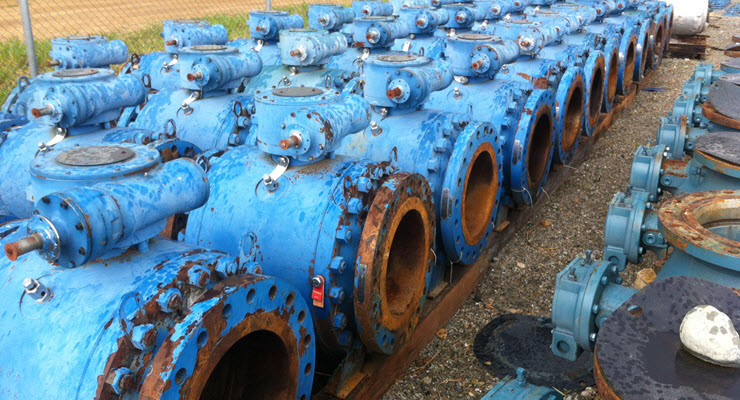
When dealing with inventory, a solid equipment preservation plan can potentially save your facility thousands, if not millions, of dollars per year by extending the asset life of new equipment and parts. It will also ensure better reliability within the plant when those valuable assets are put into play.
The Hidden Costs of Decaying Inventory
Due to extremely long lead times and remote locations, many plants in aggressive industries (such as oil and gas) purchase parts and equipment far ahead of when needed and maintain a fairly large inventory.
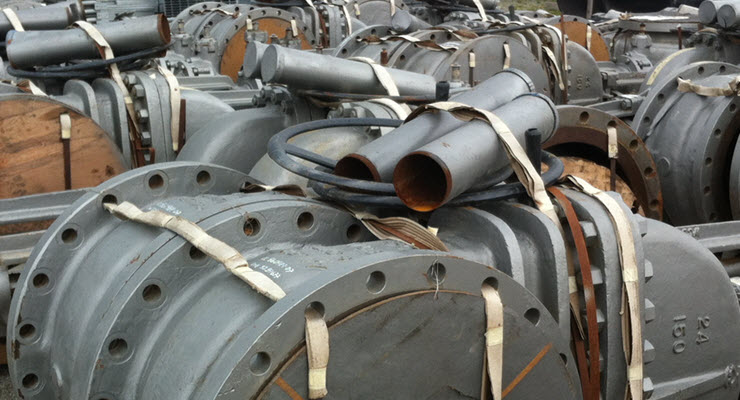
This strategy prevents potential emergency shutdown situations that can be very costly. But unless managed properly, an unprotected inventory of parts and equipment can have dramatic cost implications that often go unrecognized.
Inventory Degradation
The storage conditions for inventory are not always ideal. Some industrial parts are even stored outdoors. Extreme temperatures, humidity, oxygen, and corrosive environments can be extremely detrimental to the integrity of most metal and non-metal parts. Metals corrode over time, and polymer and plastic materials start to harden.
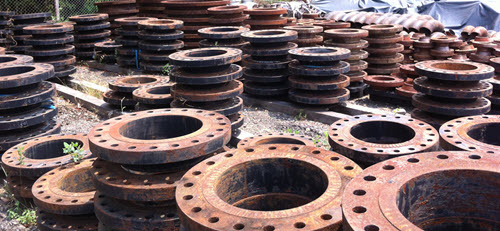
This degradation can create quite a challenge for facilities that expect inventory parts to be ready for service when needed. Instead, the quality of the “new” part is now questionable. Will the rust on a part that is going into critical equipment affect the reliability of the entire operation? What is the structural integrity of a corroded valve? Will the hardened rubber belt still function properly? These are uncertainties that no operator or manager wants to deal with. Putting compromised parts in place often means equipment is doomed to fail much sooner than expected.
Instead Chesterton recommends creating and investing in a comprehensive equipment preservation plan.
Preventative Inventory Maintenance
For inventory that is brand new or still in relatively good condition, you’ll want to map out a protection and preservation plan for each equipment or part type.
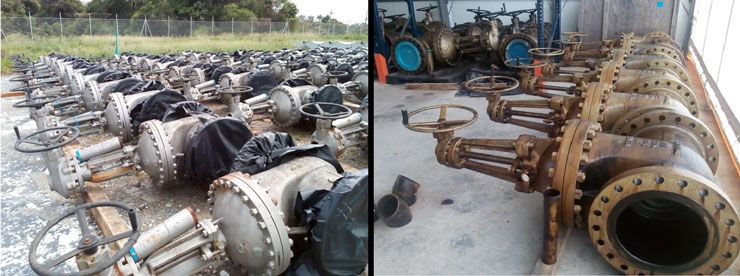
Right: Components after restoration and preservation.
Due to the wide range of material types, the solutions for preservation will vary. Some solutions might be very specific, depending on the complexity of the material type. For example, heat exchangers, pumps, piping, and valves — with large macro surfaces to protect — would be treated differently than precision bearings or pneumatic systems, which require a solution that addresses the fine details of the equipment.
Metal Surfaces
One approach to preventing metal part corrosion is to store them with Volatile Corrosion Inhibitors (VCI) packaging. This type of packaging contains corrosion-inhibiting substances that create a chemical vapor and eventually form a thin, protective layer on the stored parts. The biggest challenge with VCI packaging is ensuring that it is airtight, which can be difficult to achieve on large components. This type of corrosion inhibitor becomes less effective with the ingress of air and moisture, which leads to rapid depletion of the inhibitor and results in corrosion.
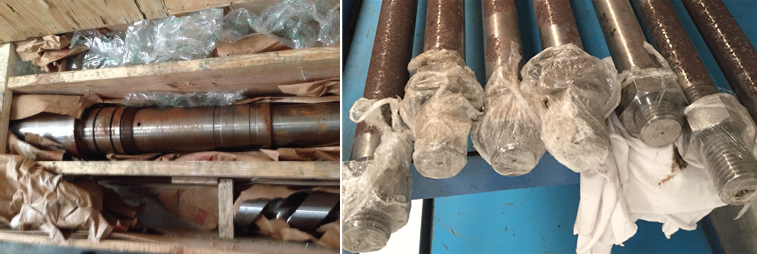
The best method for protecting metal surfaces from corrosion is to apply a corrosion-preventative coating that will thwart degradation as a result of moisture and other environmental conditions. Chesterton’s 740 Heavy Duty Rust Guard is a self-healing protective coating that forms a waxy elastic film and is virtually impervious to moisture and corrosive vapors. The coating is durable and long-lasting, and can be expected to protect parts for up to two years. It is ideally suited for large components and coarse surfaces such as the heat exchangers, valves and piping noted above.

Intricate Components and Precision Metallic Parts
Precision components such as bearings, electrical components, chains, and spindles should be protected with an ultra-thin, slightly oily, corrosion-inhibiting film. This type of film may not require removal before putting the component in service, depending upon the application. It can be easily sprayed on the components or applied by immersion/dipping. This treatment will preserve components up to six months, depending upon environmental conditions.

Non-Metallic Parts
Non-metallic parts such as plastic and other polymer components also need protection while in storage. Polymers such as rubber belts, O-Rings, and a variety of other plastics will decay due to ultraviolet (UV) heat and chemical vapor attack. For example, a rubber belt that hardens while in inventory will not have sufficient traction or gripping force, causing a reduction of energy transfer from the motor to the piece of equipment.
An oil refinery in a remote location had a large inventory exposed to extreme temperatures. Many metal parts became prematurely corroded over time, causing costly replacements. The parts were washed with a superior cleaner that removes rust and forms a layer of short-term corrosion protection protection. A heavy-duty rust guard was applied to provide long-term corrosion prevention for up to two years. Over $600,000 in spare parts originally destined for disposal were refurbished and saved over a two-year period.
Further, polymers that are used to seal electrical components such as conformal coatings may craze (micro-crack) and permit moisture to permeate the insulating varnish on PC boards. This results in short-outs.
Chesterton’s 730 Spragrip ® Belt Dressing is a waterproof solution that serves as a protection preservation system for rubber belting, O-Rings, and hoses.
Rigid polymers can be sealed and protected with Chesterton 421 Clear Protective Coating (CPC). This clear, hard-drying polymer is suitable for protection of electrical components.
A Rotary Ball Mill used to pulverize ceramic powder was driven by a set of 18 belts which had stretched and were slipping. A new set of belts cost $3K and on full day of lost production to install. By switching to a superior belt dressing, the plant was able to increase belt life by 100%. Application required only 10 minutes.
Inventory Rehabilitation / Recovery
For equipment and parts that have already suffered the effects of their storage environments, all is not lost in most cases!
Rust and oxidation can be removed, or it can be chemically transformed into a corrosion-inhibiting film. Once the oxidation is treated, a long-term preservative coating should be applied to prevent reoccurrence.
Chesterton’s 338 Super Rust Remover is a powerful solution that removes rust and oxidation while conditioning or passivating steel surfaces prior to the application of a long-term protective coating as mentioned above.
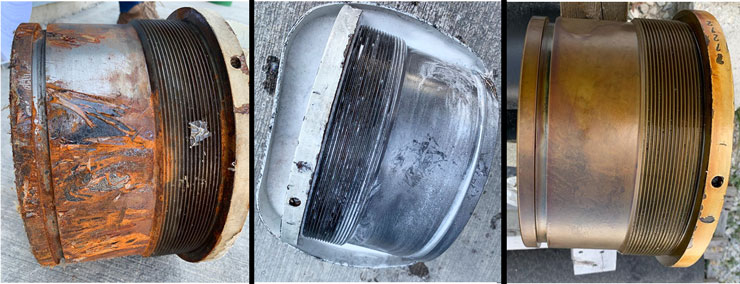
Developing an Equipment Preservation Plan
Here’s how Chesterton recommends approaching inventory protection and helps many companies directly:
1. Assess Current Inventory Value and Potential Losses Due to Decay:
The first step is to take an objective look at your current inventory to determine costs that go into loss/restoration today:
Determine the value of:
- Inventory in pristine condition,
- Inventory in marginally acceptable condition; and
- Inventory that is beyond repair and must be discarded.
- Arrive at a cost estimate of the annual amount of non-repairable, non-recoverable inventory that must be discarded (considered scrap).
- Determine a cost estimation for NOT PRESERVING/PROTECTING the current new and marginal inventory to your operation. What is the cost of rusted or otherwise compromised inventory if it results in lost equipment and premature failure? What is the cost of putting these items in service relative to long term performance and uptime?
This assessment should be a cross-departmental meeting so that everyone involved understands the issues and cost/performance implications. Next:
- Secure group agreement on the need to better protect inventory
- Arrive at an annual protection budget
- Determine method for tracking a return on investment
2. Triage & Prioritize:
Separate your inventory into two areas:
- Equipment/parts that are salvageable with some restoration
- Equipment/parts which are in good enough condition to receive protection.
Prioritize which equipment needs addressing first and track progress in a spreadsheet. Set up your action plan (restorative plan) and schedule.
3. Determine the Correct Protection Technology:
Next, break up these groups into equipment/part type as noted earlier and determine the best preservation method for each grouping. Your local supplier should be of assistance at this stage.
4. Purchase Materials, Accessories, and Schedule Manpower
Based upon the surface area to be preserved and protected OR restored, the selected technology needs to be purchased. If applicable, order spray equipment, soak tanks, protective gear, and the like. Establish a convenient work area of sufficient size, set up tables, and plan for the manpower to implement the restoration/preservation plan.
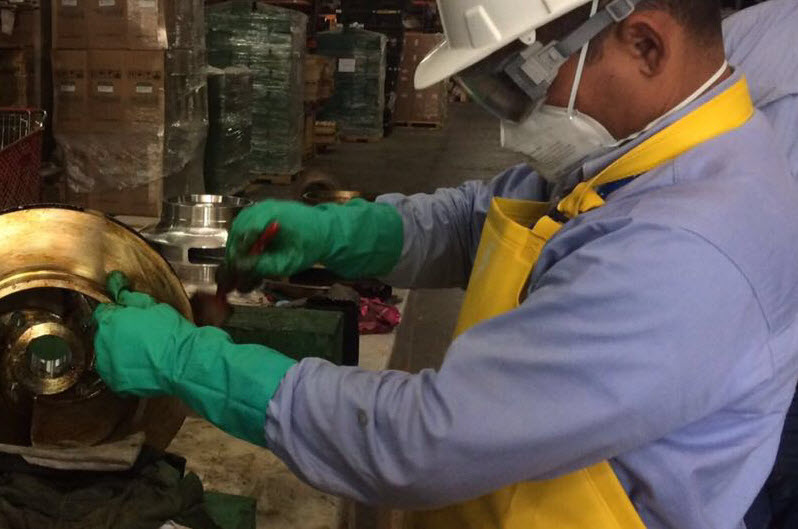
5. Proper Application/Training:
As with all systems, you’ll want to train staff to properly use the materials safely. The local supplier, application engineer, sales and service personnel should provide on-site training for plant personnel if the work is to be done in-house, or if your budget allows, provide a turn-key service.
6. Storage and Monitoring:
After preservation/restoration, the components should be monitored quarterly and corrective actions implemented if any re-occurrence of corrosion is observed.
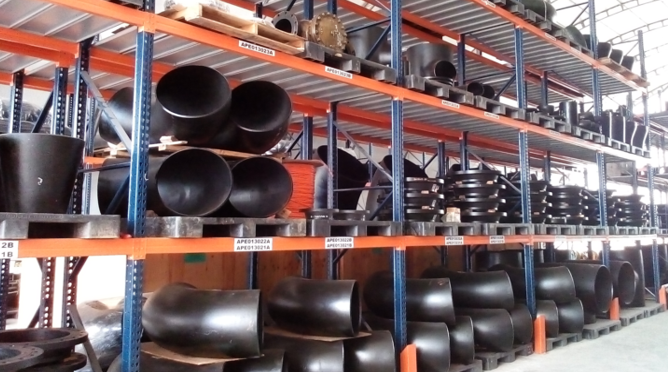
Summary
Most marine, oil and gas exploration, and refining operations spend millions on their annual “buy” of new inventory. It is crucial to preserve this investment. With a deliberate and well thought-out equipment preservation plan, your operation will have quality inventory available in excellent condition when you need it.
